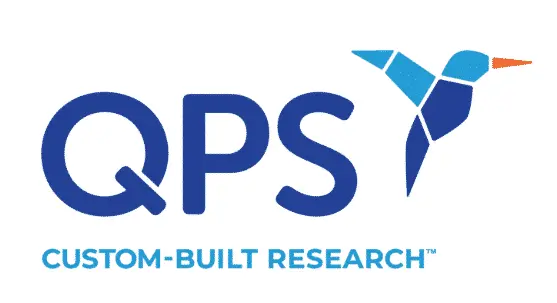All preclinical DDI studies are done in the QPS DMPK labs in Newark, Delaware, USA
Preclinical drug-drug interaction (DDI) studies are conducted in the early stages of drug development to assess how a new drug candidate may interact with other drugs when co-administered. These studies are essential for predicting potential interactions that may affect the safety and efficacy of the drug in clinical settings.
Here are key aspects of preclinical drug-drug interaction studies:
1. Objective:
- Determine Interaction Potential: Assess the likelihood and magnitude of interactions between the investigational drug and commonly co-administered drugs.
2. Study Design:
- In Vitro Studies: Evaluate potential interactions in cell-based systems or with isolated enzymes, particularly focusing on drug-metabolizing enzymes such as cytochrome P450 (CYP) enzymes.
- In Vivo Studies: Conduct studies in laboratory animals to simulate real-world conditions, assessing the impact of co-administration on pharmacokinetics and pharmacodynamics.
3. Pharmacokinetic Interactions:
- Absorption, Distribution, Metabolism, Excretion (ADME): Investigate how co-administration affects drug absorption, distribution, metabolism, and excretion.
- Enzyme Inhibition or Induction: Assess the potential of the investigational drug to inhibit or induce drug-metabolizing enzymes, especially CYP enzymes, which play a crucial role in drug metabolism.
4. Pharmacodynamic Interactions:
- Receptor Binding and Pharmacological Effects: Evaluate whether the investigational drug alters the pharmacological effects or receptor binding of co-administered drugs.
5. Types of Drug-Drug Interactions:
- Enzyme Inhibition: The investigational drug inhibits the activity of metabolizing enzymes, leading to increased levels of co-administered drugs.
- Enzyme Induction: The investigational drug induces the activity of metabolizing enzymes, potentially decreasing the levels of co-administered drugs.
- Transporter Interactions: Assess the impact on drug transporters that play a role in drug absorption and excretion. - Pharmacodynamic Interactions: Evaluate how the drugs interact at the pharmacological level.
6. In Vitro Methods:
- Microsomal Incubations: Use liver microsomes to simulate drug metabolism in vitro.
- Cell-Based Systems: Employ cell cultures to assess drug interactions at the cellular level.
- Enzyme Inhibition/Induction Assays: Test the investigational drug's impact on enzyme activity.
7. In Vivo Methods:
- Animal Studies: Administer drugs to laboratory animals and analyze pharmacokinetic and pharmacodynamic parameters.
- Pharmacokinetic Modeling: Use mathematical models to predict drug interactions based on preclinical data.
8. Regulatory Requirements:
- Submission to Regulatory Agencies: Provide preclinical DDI data as part of the regulatory submission for approval.
- Guidance Documents: Follow regulatory guidance documents on DDI studies issued by health authorities.
9. Clinical Relevance:
- Predict Clinical Outcomes: Use preclinical data to predict potential drug interactions in humans and guide the design of subsequent clinical DDI studies.
Preclinical drug-drug interaction studies play a critical role in identifying and mitigating potential risks associated with co-administration of drugs, ensuring patient safety, and informing clinical trial design. The findings from these studies contribute valuable information for optimizing dosing regimens and minimizing the potential for adverse effects in later phases of drug development.
Drug-drug interaction (DDI) studies involve the use of various equipment to assess how different drugs interact with each other. The equipment used in these studies is diverse and depends on the specific aspects of the interactions being investigated.
Here are types of equipment commonly used in drug-drug interaction studies:
1. In Vitro Study Equipment:
- Incubators: Maintain controlled conditions (temperature, humidity, CO2 levels) during in vitro experiments using cell cultures or microsomal preparations.
- Shakers and Agitators: Ensure uniform mixing of substances during incubation in cell-based assays or microsomal incubations.
- Centrifuges: Separate cellular components or microsomal fractions for further analysis.
2. Analytical Instruments:
- Liquid Chromatography-Mass Spectrometry (LC-MS): Analyze samples for drug concentrations and metabolites, providing high sensitivity and specificity.
- High-Performance Liquid Chromatography (HPLC): Separate and quantify compounds in biological samples.
- Gas Chromatography-Mass Spectrometry (GC-MS): Analyze volatile compounds and metabolites.
- Enzyme Activity Assay Kits: Measure the activity of drug-metabolizing enzymes.
- Radioactive Detectors: Used in radiolabeled studies to quantify drug and metabolite concentrations.
3. In Vivo Study Equipment:
- Animal Housing and Handling Equipment: Provide appropriate housing for laboratory animals, including cages and identification systems.
- Dosing Apparatus: Administer precise doses of drugs to animals, including oral gavage systems, intravenous catheters, or inhalation chambers.
- Blood Collection Systems: Collect blood samples for pharmacokinetic analysis.
- Tissue Collection Instruments: Surgical tools for harvesting tissues from animals during or after the study.
4. Pharmacokinetic Modeling Tools:
- Computers and Software: Analyze and model pharmacokinetic data to predict drug-drug interactions and guide study design.
5. Safety Equipment:
- Personal Protective Equipment (PPE): Ensure the safety of researchers handling drugs and biological samples.
- Fume Hoods: Provide ventilation for handling chemicals and protecting researchers from exposure.
6. Data Analysis and Documentation Tools:
- Laboratory Information Management Systems (LIMS): Manage and document experimental data, sample information, and results.
- Computational Tools: Utilize software for data analysis, statistical modeling, and prediction of drug interactions.
7. Quality Control Instruments:
- Calibration Tools: Ensure the accuracy and precision of analytical instruments.
- Quality Control Standards: Monitor the performance of instruments and methods over time.
8. Regulatory Compliance Tools:
- Standard Operating Procedures (SOPs): Develop and follow standardized procedures for conducting DDI studies.
- Compliance Documentation: Maintain documentation in accordance with regulatory requirements.
8. Clinical Equipment (for Clinical DDIs):
- Clinical Monitoring Devices: Monitor vital signs and collect clinical data in human subjects during DDI studies.
- Clinical Pharmacokinetic Sampling Equipment: Collect blood or other samples for pharmacokinetic analysis in clinical settings.
It’s important to note that the specific equipment used can vary depending on the nature of the drug-drug interaction study, the type of drugs involved, and the methods employed for analysis. Additionally, adherence to safety regulations and ethical considerations is crucial when conducting DDI studies.





